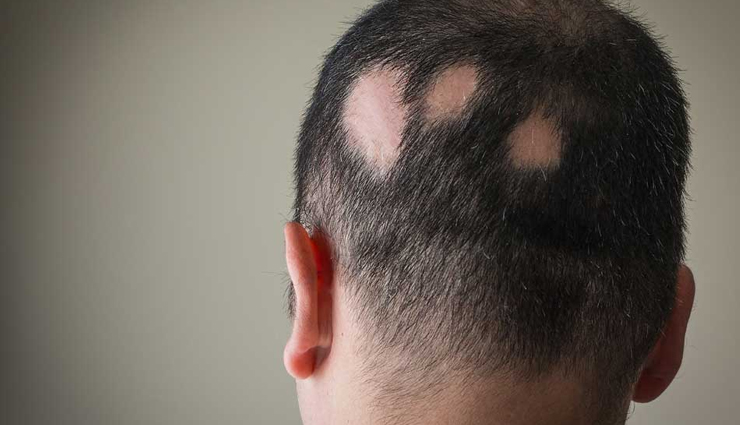5 Alopecia Areata Symptoms You Should Not Ignore
By: Kratika Tue, 08 Nov 2022 5:07:15

For many of us, hair is a major part of our identities. It emphasizes our personality and style. Thankfully, bald spots can only happen in old age – right? Think again.
A condition called alopecia areata is rare, but it can happen to anyone. It is an autoimmune disease, much like rheumatoid arthritis and type-1 diabetes. In this case, the immune system wrongly attacks healthy tissue, causing hair loss.
If you have a family history of alopecia areata, you have a greater risk. The chances increase if that person is an immediate relative.
While it usually begins in childhood, it may also develop later on in life.1 Here are the top five alopecia areata symptoms and signs.

# Hair Loss
The definition of alopecia areata is also its primary symptom: hair loss. It develops in the form of bald spots, which can lead to alopecia totalis or total baldness. This only happens to 5 percent of all alopecia areata cases. It’s possible to be perfectly healthy and have bald spots. However, it’s not a life-threatening problem, so it doesn’t mean you are ill or unwell. Additionally, pain isn’t a symptom of alopecia areata.
That’s not to say there aren’t mental and emotional side effects. Hair is a big part of who we are! It’s normal to feel insecure and self-conscious.

# Round Patches
Alopecia areata hair loss has specific traits. It shows up as round, circular bald patches on the scalp. You might also lose hair from other parts of the body, like the beard, eyebrows, arms, or legs.
Any type of hair loss doesn’t mean you have alopecia areata. First, check to see if you have patches, then look at the shape. Roundness is a tell-tale sign.
These patches will also show up gradually. It’ll start with one or two, then eventually become more common.

# Smooth Skin
When hair falls off, the bald spots will be smooth. It might seem like it had never had hair, to begin with! Sometimes, it might have a peach-toned discoloration.

# Thin Hair
The hair that you do have might thin out. This alopecia areata symptom will happen slowly and gradually, just like the patches. You may also find clumps of hair when you brush or wash it.

# Burning And Itching
Some people with alopecia areata may feel burning sensations on the scalp. Itching might also crop up, making it even more annoying to deal with. If this sounds familiar, consider using soothing oils that double as hair loss treatments. Ideal options include pumpkin seed oil and peppermint essential oil.





